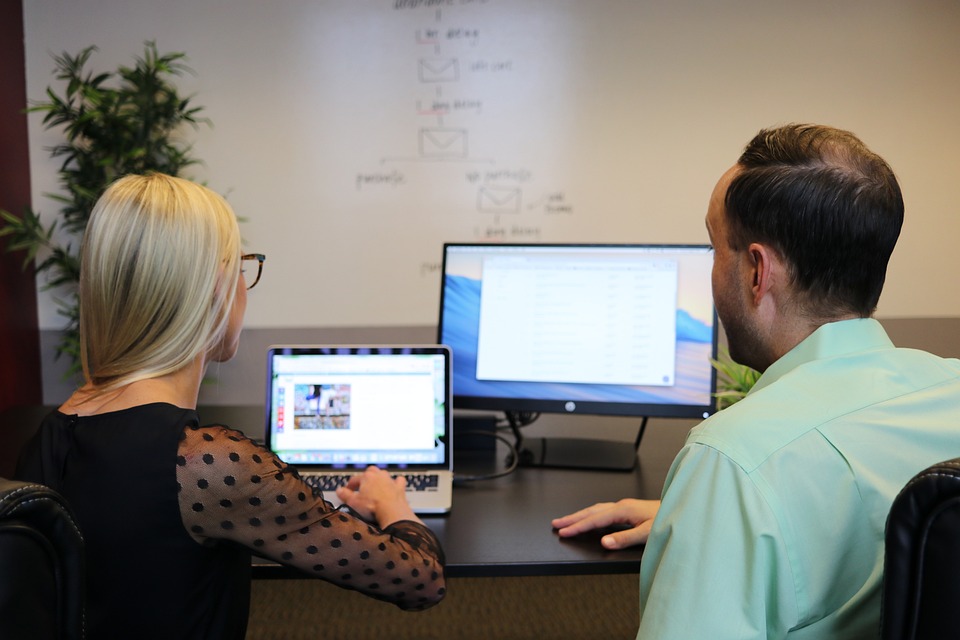One more area of computer based intelligence research is developmental calculation.
It gets from Darwin’s hypothesis of regular choice. It sees hereditary calculations go through irregular changes and mixes between ages trying to develop the ideal answer for a given issue.
This approach has even been utilized to assist with planning simulated intelligence models, successfully utilizing simulated intelligence to assist with building man-made intelligence. This utilization of developmental calculations to advance brain networks is called neuroevolution. It could play a significant part to play in aiding plan proficient artificial intelligence as the utilization of canny frameworks turns out to be more common, especially as interest for information researchers frequently exceeds supply. The strategy was exhibited by Uber man-made intelligence Labs, which delivered papers on utilizing hereditary calculations to prepare profound brain networks for support learning issues.
At last, there are master frameworks, where PCs are customized with decides that permit them to take a progression of choices in view of an enormous number of data sources, permitting that machine to emulate the way of behaving of a human master in a particular space. An illustration of these information based frameworks may be, for instance, an autopilot framework flying a plane.
What is energizing the resurgence in man-made intelligence?
As illustrated over, the greatest leap forwards for man-made intelligence research as of late have been in the field of AI, specifically inside the field of profound learning.
This has been driven to a limited extent by the simple accessibility of information, yet considerably more so by a blast in equal figuring power, during which time the utilization of bunches of illustrations handling units (GPUs) to prepare AI frameworks has become more predominant.
In addition to the fact that these bunches offer tremendously more impressive frameworks for preparing AI models, yet they are presently generally accessible as cloud administrations over the web. Over the long haul the significant tech firms, any semblance of Google, Microsoft, and Tesla, have moved to utilizing particular chips custom-made to both running, and all the more as of late, preparing, AI models.
An illustration of one of these custom chips is Google’s Tensor Handling Unit (TPU), the most recent adaptation of which speeds up the rate at which helpful AI models constructed utilizing Google’s TensorFlow programming library can surmise data from information, as well as the rate at which they can be prepared.
These chips are utilized to prepare up models for DeepMind and Google Mind and the models that support Google Decipher and the picture acknowledgment in Google Photographs and administrations that permit general society to fabricate AI models utilizing Google’s TensorFlow Exploration Cloud. The third era of these chips was uncovered at Google’s I/O meeting in May 2018 and have since been bundled into AI forces to be reckoned with called cases that can complete more than 100,000 trillion drifting point activities each second (100 petaflops). These continuous TPU redesigns have permitted Google to further develop its administrations based on top of AI models, for example, dividing the time taken to prepare models utilized in Google Decipher.
What are the components of AI?
As referenced, AI is a subset of man-made intelligence and is for the most part parted into two principal classes: directed and unaided learning.
Regulated learning
A typical procedure for showing man-made intelligence frameworks is via preparing them utilizing many marked models. These AI frameworks are taken care of enormous measures of information, which has been commented on to feature the highlights of interest. These may be photographs marked to show whether they contain a canine or composed sentences that have references to demonstrate whether the word ‘bass’ connects with music or a fish. When prepared, the framework can then apply these names to new information, for instance, to a canine in a photograph that is simply been transferred.
This course of showing a machine as a visual demonstration is called directed learning. Marking these models is generally brought out by online laborers utilized through stages like Amazon Mechanical Turk.
Preparing these frameworks normally requires tremendous measures of information, for certain frameworks expecting to scour a large number of guides to figure out how to complete an undertaking successfully – – albeit this is progressively conceivable during a time of huge information and broad information mining. Preparing datasets are tremendous and filling in size – – Google’s Open Pictures Dataset has around 9,000,000 pictures, while its named video store YouTube-8M connects to 7,000,000 marked recordings. ImageNet, one of the early information bases of this sort, has in excess of 14 million ordered pictures. Aggregated north of two years, it was assembled by almost 50 000 individuals – – the vast majority of whom were enrolled through Amazon Mechanical Turk – – who checked, arranged, and marked very nearly one billion up-and-comer pictures.
Approaching gigantic marked datasets may likewise demonstrate less significant than admittance to a lot of figuring power over the long haul.
Lately, Generative Ill-disposed Organizations (GANs) have been utilized in AI frameworks that just require a limited quantity of marked information close by a lot of unlabelled information, which, as the name recommends, requires less manual work to get ready.
This approach could consider the expanded utilization of semi-managed realizing, where frameworks can figure out how to complete undertakings utilizing a far more modest measure of named information than is needed for preparing frameworks utilizing regulated advancing today.
Unaided learning
Conversely, unaided learning utilizes an alternate methodology, where calculations attempt to distinguish designs in information, searching for similitudes that can be utilized to sort that information.
A model may be bunching together natural products that gauge a comparable sum or vehicles with a comparative motor size.
The calculation isn’t set up ahead of time to select explicit kinds of information; it essentially searches for information that its likenesses can bunch, for instance, Google News gathering stories on comparative subjects every day.
Support learning
An unrefined relationship for support learning is compensating a pet with a treat when it plays out a stunt. In support learning, the framework endeavors to expand a prize in light of its feedback information, essentially going through a course of experimentation until it shows up at the most ideal result.
An illustration of support learning is Google DeepMind’s Profound Q-organization, which has been utilized to best human execution in an assortment of exemplary computer games. The framework is taken care of pixels from each game and decides different data, like the distance between objects on the screen.
By likewise taking a gander at the score accomplished in each game, the framework constructs a model of which activity will boost the score in various conditions, for example, on account of the computer game Breakout, where the oar ought to be moved to block the ball.
The methodology is likewise utilized in mechanical technology research, where support learning can assist with helping independent robots the ideal method for acting in certifiable conditions.




